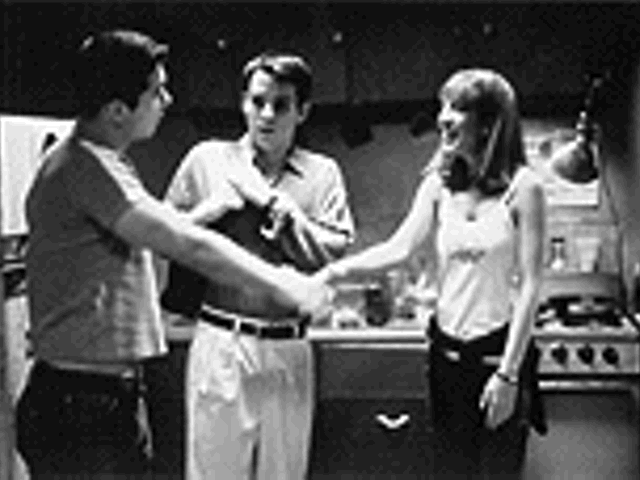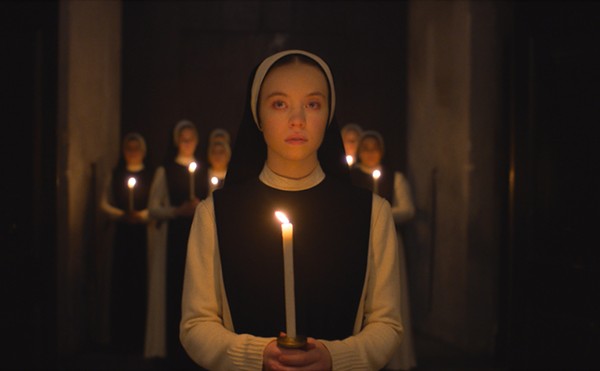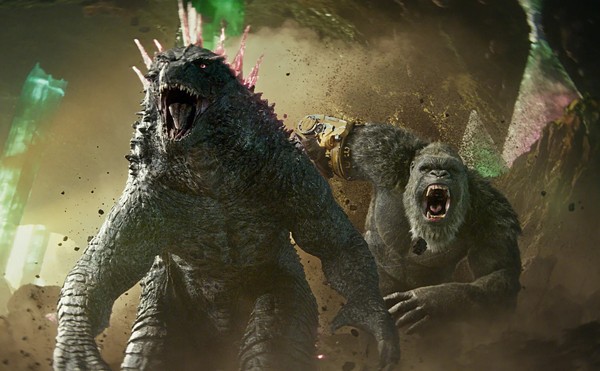William Hurt stars as Blake Pellarin, an independent candidate in the 2000 election for governor of Missouri. Pellarin's politics are not entirely clear, which is to say that he seems to be a Clintonian "liberal." His main opponent is good ol' boy Homer Dix (Mack Harrell), another independent; if he beats Dix, as seems likely, he is positioned to move on to the White House in four years.
But all is not well in the Pellarin camp. The candidate's marriage is rocky. His alcoholic wife (Miranda Richardson), a rich girl, continues to bankroll his campaign despite his philandering. And now, with only a few days before the election, there are hints of a new scandal bubbling up from Pellarin's past.
Orchestrating this ripple is one Kim Mennaker (Nigel Hawthorne), the flamboyant former senator who raised Pellarin and his long-lost brother and set the candidate's career in motion. It's not clear how Mennaker himself ever managed to get elected: He's brazenly homosexual, unspeakably effete and upper-class, and seemingly indiscreet about his dabbling in pornography.
Mennaker seems intent on blackmailing Pellarin into a high-level appointment when the latter makes it to the White House. At the same time, paradoxically, his actions are almost sure to destroy his protégé's career in short order: He starts feeding information to TV reporter Cela Brandini (Irene Jacob) but unrealistically seems to think he will be able to bottle up the press as soon as Pellarin capitulates.
One of the ironies around this resurrection of Welles' screenplay is that Hickenlooper, a young director with a lot of hustle — he has made several previous features, though his most significant claims to fame are Some Folks Call It a Sling Blade, the original short that developed into Billy Bob Thornton's Oscar-winning feature, and the documentary Hearts of Darkness — has been able to mount a production, whereas Welles himself, inarguably one of the greatest American directors, failed. It isn't necessary to recount one more time the litany of misfortunes and indignities that beset Welles' career, but with all due respect to Hickenlooper, this is yet one more.
Whether Welles could have made a great film of The Big Brass Ring is strictly a matter of speculation: The story has its problems, but so did lots of his stories. No filmmaker was ever better at finessing his way past narrative problems with thick applications of style (see Lady from Shanghai and Mr. Arkadin.)
Hickenlooper and his collaborators have — for the most part, wisely — not treated Welles' original like holy writ. (A show reel, made two or three years ago for money-raising purposes, with Malcolm McDowell in the Hawthorne role, is more faithful and substantially different.) In many ways, the story benefits from the updating.
But some of the changes are problematic. Why is a nationally known TV reporter spending so much time covering a Midwestern gubernatorial campaign? (Previously, the character was a tabloid reporter.) Why has the old senator been living in Cuba, of all places? And why are there so many arch, wink-at-the-audience references to other Welles films? For buffs, at least, it's distracting when Pellarin makes a joke about Rosebud and when Mennaker swipes a line from Touch of Evil.
Given all the built-in problems — not the least of which are the inevitable might-have-been comparisons to Welles — Hickenlooper does as workmanlike a job with the material as could be hoped for. He gets consistently good performances from his cast, and the complicated plot unravels itself in interesting ways.
There are moments when he tries to replicate bits of Welles' style: certain tracking shots and crosscutting sequences, low-angle shots framing people against the sky, a performance that seems designed to evoke Glenn Anders' unforgettable Grisby in Lady from Shanghai. But his efforts are frustrated by what were presumably commercial requirements: It's hard to build a Wellesian mood with bright, flat lighting and color cinematography. The script is filled with stylized dialogue that might have worked within a moodier context but verges on stilted here.
Still, short of Lars Von Trier having taken up the gauntlet, there is probably no one in the known universe with even a shot at replicating Welles' style. And until the great man is reincarnated, Hickenlooper's version is both an interesting glimpse into Welles and a reasonably entertaining film in its own right.
The Big Brass Ring appears on Showtime at 9:15 p.m. Aug. 30 and 11:30 p.m. Sept. 3 and on Showtime 2 at 11:40 p.m. Sept. 7 and 8 p.m. Sept. 27.





